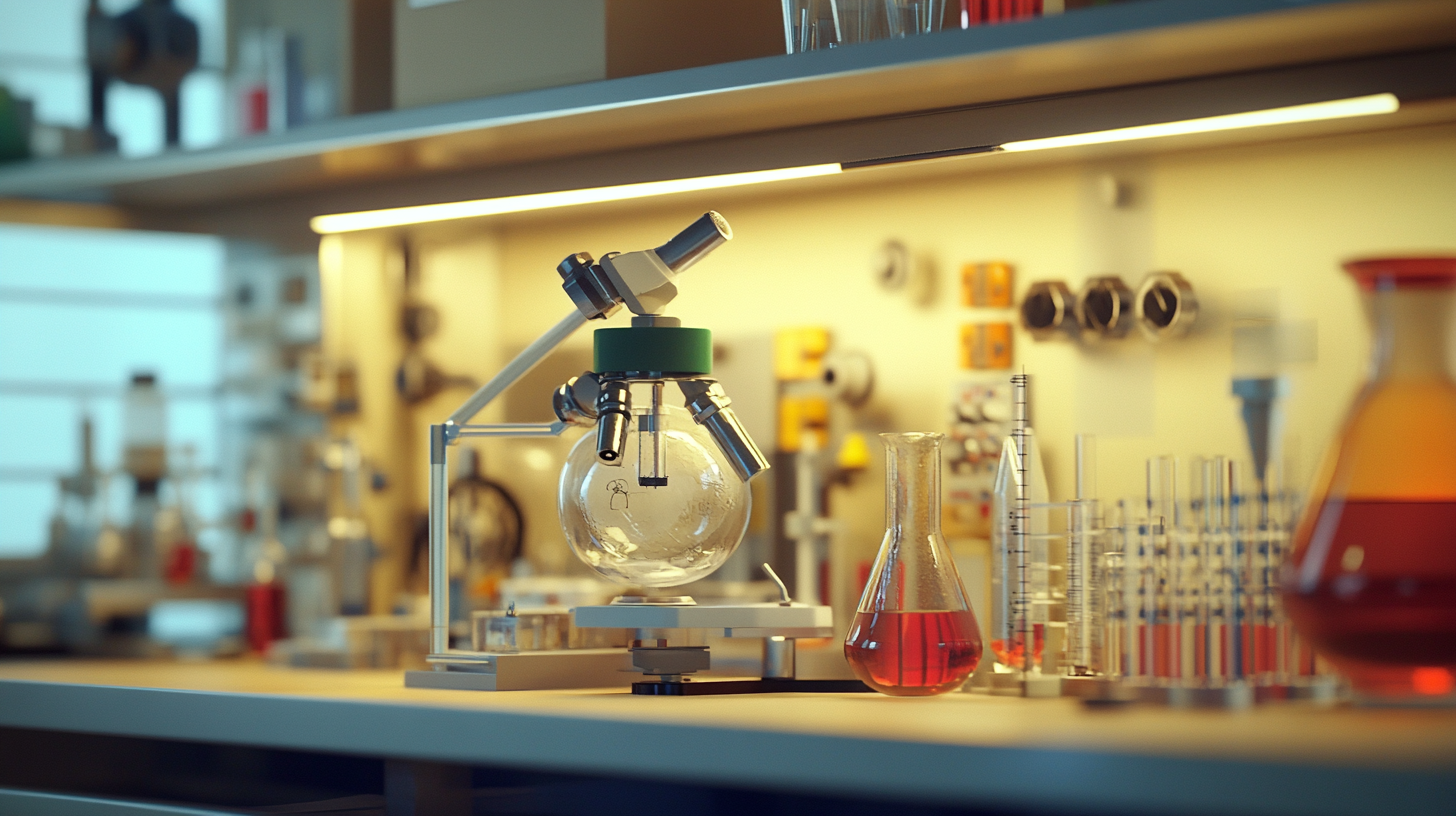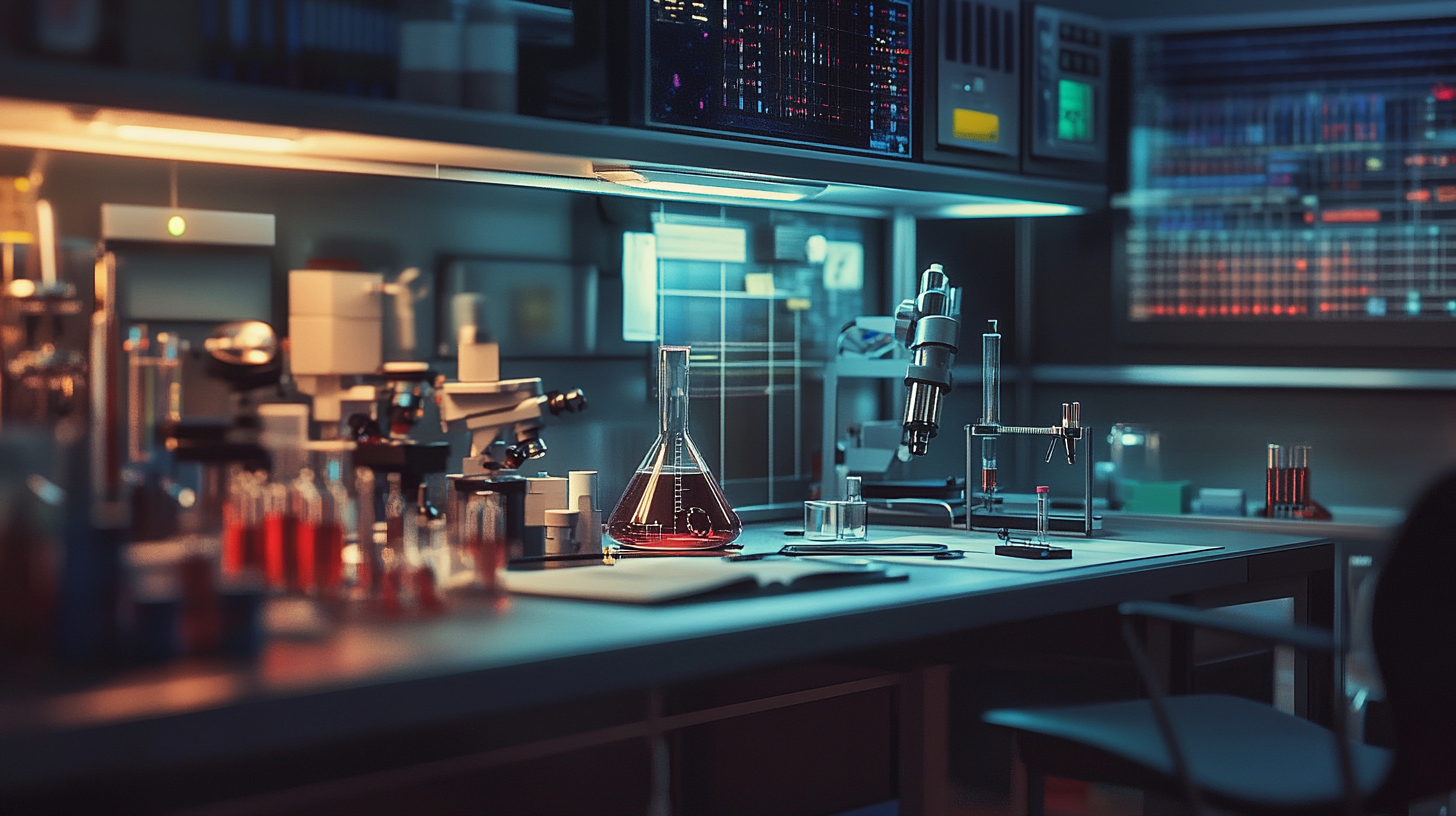In the realm of scientific research, the design of a Physics Laboratory Bench plays a crucial role in shaping successful experimentation outcomes. The right laboratory bench not only fosters an organized workspace but also enhances the efficiency and safety of various physics experiments. As the demand for innovative solutions in scientific environments continues to grow, it is essential to focus on meticulous design principles that can accommodate a variety of experimental setups. This blog will delve into five practical tips for creating the best Physics Laboratory Bench, ensuring it meets the unique needs of researchers while standing up to the rigorous standards of "精工细造,中国制造,服务世界." By prioritizing thoughtful design, we can provide a robust platform that empowers scientists to push the boundaries of knowledge and discovery.

When designing a physics laboratory bench, selecting the right materials is paramount to ensure durability and functionality. The uniqueness of a physics lab requires benches that can withstand various experiments, from high-energy physics to delicate measurements. Materials such as epoxy resin and stainless steel are excellent choices for their resilience against stains, chemicals, and wear. Epoxy resin, with its strong bonding properties, provides a non-porous surface that is easy to clean and resistant to corrosion, making it ideal for laboratories that handle various substances.
Additionally, consider the bench's surface finish and texture, as these factors contribute to both safety and usability. A smooth surface is crucial for easy data collection and manipulation, while anti-slip features help prevent accidents when handling equipment or materials. Incorporating adjustable height mechanisms can further enhance functionality, catering to different experiment setups and maximizing comfort for users. Investing in high-quality, specialized materials will not only prolong the lifespan of the laboratory bench but also create a conducive environment for optimal experimentation in the field of physics.

When designing a physics laboratory bench, optimizing space efficiency is paramount. A well-planned bench layout allows for a smooth workflow and minimizes clutter, making it easier for students and researchers to focus on their experiments. Begin by evaluating the available space and determining the specific requirements of your lab. Consider how often you will need to move equipment or change setups, as flexibility in your design can enhance overall functionality.
Incorporating modular components is a practical approach to achieving a space-efficient physics lab bench. By using adjustable shelving, movable carts, and stackable storage solutions, you can create a versatile workspace that adapts to varied experiments without sacrificing accessibility. Additionally, integrating technology, such as built-in power outlets and data ports, ensures that your bench remains equipped for advanced experiments, while also keeping the workspace organized.
Always remember that a well-designed bench not only supports current projects but also anticipates future needs, making space optimization a key factor in laboratory design.
Designing a physics laboratory bench that prioritizes ergonomics is essential for enhancing comfort during experiments. A well-designed workspace minimizes strain on the body, allowing researchers to focus on their work rather than discomfort. Start by considering the height of the bench; it should accommodate various users while enabling them to perform tasks without bending or reaching excessively. Adjustable benches can be particularly effective, as they cater to individual preferences and postures.
Incorporating ergonomic features, such as padded armrests and strategically placed tools, can significantly improve the user experience. Researchers often spend long hours at their benches, so integrating features like adjustable chair height and supportive backrests is critical. Additionally, organizing instruments and materials within easy reach can reduce unnecessary movements, thereby optimizing workflow. By prioritizing ergonomics in the design of physics laboratory benches, institutions can foster a more productive and comfortable environment for experimentation, ultimately leading to better results and increased innovation.
This bar chart illustrates the importance ratings of various design features critical for optimizing a physics laboratory bench. Height adjustability is rated the highest, reflecting the ergonomic focus necessary for enhancing comfort during experiments.
Creating an organized physics laboratory is crucial for optimal experimentation, as clutter can significantly hinder productivity and focus. Effective storage solutions play a vital role in maintaining order and efficiency. According to a report by the National Laboratory of Physics, a well-organized lab can enhance workflow by up to 30%, allowing researchers to dedicate more time to experimentation rather than searching for materials. Therefore, implementing smart storage systems is essential for those aiming to elevate their laboratory's functionality.

One effective storage solution is the integration of modular shelving units, which can be tailored to the specific needs of the laboratory. Such systems allow for adjustable space that accommodates various equipment and materials, from glassware to electronic devices. Moreover, mobile storage carts are becoming increasingly popular, providing flexible accessibility to frequently used tools while keeping benches clear for ongoing experiments.
As highlighted by the American Institute of Physics, adequate organization and accessibility can lead to a reduction in accidental damage to sensitive equipment by nearly 25%. Prioritizing innovative storage solutions not only preserves the integrity of valuable instruments but also fosters a more conducive environment for experimentation and discovery.
When designing a physics laboratory bench, integrating technology is paramount for enhancing the research experience. According to a report from the National Science Foundation, approximately 70% of physics researchers indicated that real-time data access significantly improves their workflow and experiment outcomes. Setting up a reliable power supply and ensuring efficient data access on your lab bench can streamline operations and facilitate high-quality experimentation.
The implementation of smart power management systems can optimize energy consumption in physics labs, aligning with sustainability goals. A study from the International Energy Agency reports that laboratories use around 10-15% of total building energy, primarily due to inefficient power setups. By incorporating power strips with surge protection and systematically arranging outlets for easy access, labs can not only protect sensitive equipment but also reduce downtime caused by power issues. Furthermore, utilizing wireless data transfer technology eliminates clutter while allowing researchers to focus on experimentation rather than logistics. This integration will not only optimize productivity but also enhance the overall research quality and efficiency in modern physics laboratories.
| Tip Number | Description | Technology Integration | Power Access | Data Access |
|---|---|---|---|---|
| 1 | Ensure adequate workspace and organized layout. | Use modular furniture for flexibility. | Install multiple power outlets for devices. | Provide data access points for easy connectivity. |
| 2 | Incorporate safety measures and materials. | Integrate safety alarms and monitoring systems. | Use surge protectors for sensitive equipment. | Ensure wireless data access for remote monitoring. |
| 3 | Facilitate collaboration and interaction. | Adopt video conferencing tools. | Install shared power stations. | Set up a centralized data sharing system. |
| 4 | Optimize equipment placement for accessibility. | Use digital displays for real-time data. | Position outlets within reach of all equipment. | Utilize cloud storage for experiment data. |
| 5 | Implement ergonomic designs to enhance comfort. | Integrate adjustable chairs and tables. | Use easy-to-reach power strips. | Incorporate mobile apps for data logging. |
